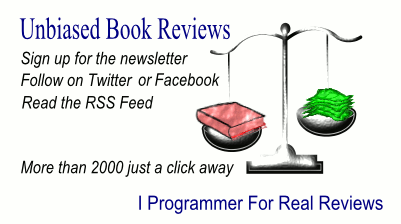| Microformats Made Simple |
|
Author: Emily P. Lewis Publisher: New Riders, 2009 Pages: 312 ISBN: 978-0321660770 Aimed at: Web people Rating: 2 Pros: Some good bits between the over-long examples Cons: Confusing This book includes some interesting discussion but it's well hidden.If you are a beginner you may be hard pushed to see the microformats for the HTML in its examples. Author: Emily P. Lewis Publisher: New Riders, 2009 Pages: 312 ISBN: 978-0321660770 Aimed at: Web people Rating: 2 Pros: Some good bits between the over-long examples Cons: Confusing I'm really not sure what to make of this book. I thought I understood Microformats and was expecting to just go over what I already knew because the book had "Simple" in the title. Instead I found most of the explanations completely baffling. I had to re-read sections more than once to figure out what the meaning was. Microformats are essentially simple but some how this book makes them seem complex. It starts with a look at what microformats are - essentially standard ways of using HTML/CSS as a semantic markup language, i.e. you mark up the text for meaning rather than formatting using HTML and some aspects of CSS such as class. The chapter also explains why you should use microformats, provides some of the guiding principles and an example. Next we move on to a whole chapter on XOXO. This is surprising because the format in question amounts to using the xoxo class to enclose an outline of document - yes that's it. But by the third page my eyes were glazing over as the complexities seemed to grow. The examples were too long and poorly presented, making the whole thing difficult to read. For example, the second use of XOXO presented is a site map and this is introduced with a single sentence followed by a long listing with wrapped lines that you are invited to read without any clue as to what might be interesting about it. Then a new section tells you that to apply XOXO to the site map we simply add the class="xoxo" attribute to the root unordered list tag. OK, but why did I need such a long and difficult-to-read example? And so the chapter continues with long, unmotivated, unexplained examples. You keep thinking that there must be more going on but there isn't - it just makes it all look so complicated. Basically if you are clever enough to understand the HTML and CSS in the examples you probably are clever enough to get the idea using a much shorter example. The rest of the book continues in the same way. Chapter Three deals with the use of rel and rev; Chapter Four explains XFN and how it can be used to mark up social relationships and Chapter Five deals with xFolk. We then move on to some of the better known microformats - hCard, hCalendar and hResume, hAtom, hReview. There is a chapter summarizing hAudio, hRecipe, hProduct and hMedia. The final chapter deals with styling microformats which is essentially some CSS listings that work with particular formats. In between the overlong examples and the repetition there is some interesting discussion but it's well hidden and doesn't amount to a book. I would like to say that if you are a beginner then the long examples might help but to be honest I think you would be hard pushed to see the microformats for the HTML. As stated earlier in the review if you are good enough to understand the listings then you are up to following the deeper ideas via shorter examples with a bit more explanation. I can't recommend this title even though I think that microformats are a good idea.
|
|||
| Last Updated ( Sunday, 02 May 2010 ) |
